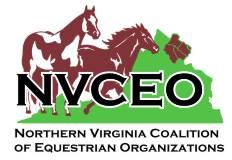|
Trail Riding Tips
1.
Desensitize
your horse to scary situations you may encounter on the trail in a
safe environment, such as an arena.
2.
Gradually introduce him to traffic where you can control the
situation.
3. Before
you even think of hitting the trail, you and your horse should have
mastery of basic skills in the arena. You should have whoa and go,
steering, and control at all gaits.
4. If your
horse isnít used to riding alone, build up his confidence by going out
for short jaunts frequently, working up to longer rides as his
confidence grows.
5. Donít
tailgate! Maintain one horse length between horses.
6. Before
you trot or canter on the trail, check with the other riders in your
group.
7. In a
mixed-levels group ride, put an experienced rider
in the lead and another at the end.
8. If your group is well matched in skill level, take turns riding in
the lead, middle and end positions.
9. Negotiate road crossings as a group so that no horse is left behind
on the other side of a busy roadway.
10. Horses feel safest in a herd, and some may panic if they feel
deserted. Itís best to keep all riders in your group together,
although experienced horses and riders may be fine venturing off
alone.
11. At water stops, wait until all horses are done drinking before
leaving the watering place. Some horses wonít drink if they are
distracted by the fear of being left behind.
12. If your horse tries to hurry home, refocus his attention by asking
him to ride in serpentines along the trail, or flex to give his
shoulder.
13. Rather than pulling straight back on the reins when your horse
dives for a bite of grass along the trail, try pulling him left or
right while you encourage him to move out.
14. Mind your multi-use manners: Show courtesy to hikers, bikers and
others sharing the trail. You are an ambassador for equestrians!
15. If you crave competition, consider participating in a judged trail
ride (trail trial), endurance ride or competitive trail ride.
16. Looking for adventure with your friends or family? Some camping
facilities, state and national parks offer amenities to accommodate
horses, including corrals.
17. Approach slippery, slick or rocky trail conditions slowly. Keep
yourself centered in the saddle, so you donít throw your horse off
balance.
18. Clean up after yourself: If you parked your rig at a trailhead,
donít leave piles of manure and other mess behind.
19. Save our trailsójoin the Equestrian Land Conservation Resource to
work for land access and preservation on a local or national level.
www.elcr.org
20. Wear a helmet with an extended visor for added sun
Protection
21. Be seen: If you ride out at night, reflective tack and clothing is
a must. Wear dayglo orange in hunting territory.
22. Keep your tack in good repair. You donít want a cinch or bridle to
break out on the trail.
23. If you only trail ride on the weekends, make sure the ride you
choose is within your horseís current fitness level.
24. When you set out, always let someone know where you are going and
when you expect to be back.
25. Carry a cell phone on your body, rather than in a saddlebag, in
the event that you and your horse part company. Attach an ID tag
somewhere on your horseís gear as well.
26. Pack a basic first-aid kit for horses and humans.
27. Donít let your horse choose to charge up hillsóa change in pace
should be decided by you.
28. Reevaluate your horseís saddle fit on trail. A good arena saddle
doesnít always make a good trail saddle.
29. If you use protective legwear for your horse, make sure it can
withstand the rigors of trail riding. You shouldnít come home with
burrs and/or sand in your horseís boots or wraps.
30. Insect populations can increase on the trails. Protect yourself
and your horse from pests, including gnats and ticks.
|
